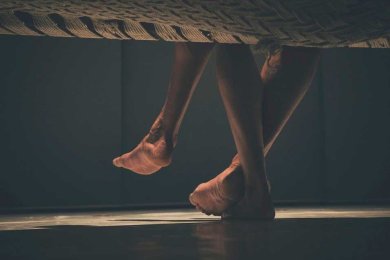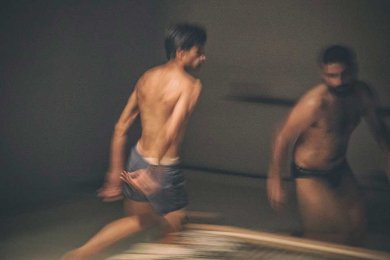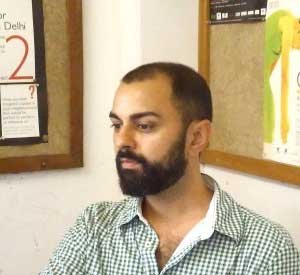
|   |

|   |
 e-mail: ukb7@rediffmail.com Tiptoe into my parlour January 23, 2017 In this day and age, with the onslaught of artificial intelligence, when the humanoid robot is being considered for ‘de facto’ as well as ‘de juro’ recognition as an ‘electronic person’, how anachronistic would it seem to have the entire LGBT community to be derided and detested for their third-gender orientation and legally recognized only as non-persons? It would appear that way back in 1860, the British – as part of their colonizing effort -- introduced a standardised Indian Penal Code which replaced, among other things, a tolerant Indian attitude to sexuality with a highly moralistic and hostile Judaic-Christian one. Section 377 of the IPC was the legacy of an archaic law against “unnatural” offences and stated: “Whoever voluntarily has carnal intercourse against the order of nature with any man, woman or animal shall be punished with imprisonment for life…” Glancing at the erotic content of Khajuraho temples and Urdu ghazals – or at the Kamasutra for that matter – one would note the almost mystical role that sexuality has played in Indian civilization. When the Manusmriti commented against homosexuality, it made it a matter of private penance and not of public discourse. No surprise, then, that the concept of “unnatural” offences was an obsolete Victorian one. As was observed by the social activist Nishit Saran in 2000 in his article, Why My Bedroom Habits Are Your Business, “The ‘order of nature’ in the statute refers, of course, to sexual acts intended for procreation. The idea that sex is only meant for making babies is ridiculously outdated, as ruled by Gujarat High Court in 1968, but the law remained unchanged…So watch out if you are having sex without intending to produce children, or if you are having oral sex...You might end up spending the rest of your life in prison!” 

Queen-Size, choreographed by Mandeep Raikhy, the dance administrator of Gati Dance Forum from Delhi and presented by Arts Forward in Kolkata, was professedly “performed intimacy” making a statement against the archaic law of Section 377 of the IPC. Having graduated in dance theatre from Laban Institute, London, and having worked with Shobana Jeyasingh Dance Company in the UK for several years, Mandeep had his choreographic exploration take the form of a detailed study of the physical intimacy between two men. Played out on a charpoy (knit before the show, in full view of the audience), the dancers Lalit Khatana and Parinay Mehra, examined the various patterns of intimacy between two male bodies – carnal, mechanical and emotional – for a “close encounter” of the very first kind! In deliberately making the encounter embarrassingly intimate, Queen-Size appeared to trigger questions around a spectacle and its privacy, sharp bouts of dissent and serenity of consent. The performance took place on the top as well as the bottom of the charpoy, in the space around it and even by turning it upside down. The body movements grew from feeling and sensing each other to a crescendo; from passions allowed first to simmer and then running riot; from human gropings to animal antics; from slowly throbbing spasms to frenzied orgies. The show was mostly sans sound, or with minimalist music, but seldom with resonance of rhythms. There was all along a preponderance of simulated sex-acts, so much so that many viewers covered their eyes and with entries and exits encouraged at punctuated intervals, there was a near exodus of spectators halfway through. In any case, the duration of two and a half hours seemed way too long, needing to be pruned. Excerpts from interview with the director Mandeep Raikhy:  Mandeep Raikhy What has been your dancing and choreographic oeuvre? I am 36 and my dancing now has entered its 18th year. My full-length works have been Inhabited Geometry (2010) and A male ant has a straight antennae (2013), besides Queen-Size (2016). I have worked on masculinity for last two years and am engaged on sexual rights at present. I do not work on one fixed thing and may not repeat my kind of choreography for Queen-Size in future. While your aim is entirely laudable, your means to that end seems to fall far short of the dance aesthetics that would normally captivate the viewers. Your take? My response to the dance aesthetics is heavily dependent on how you define aesthetics. To me, the burden should rest with your power of making the body making sense and acquire meaning. If you seek to ask questions about society and what needs to be done by society to redress a malady, you have to evolve your own heavy aesthetics with such elements as gesture, touch and proximity. In a sense, you have to use your own core vocabulary in consonance with your aim and allow movements to sit well with your destination. How then did you evolve your choreography? My choreography focused on fragments like intimacy as played out on the fingers, tenderness of touch, heat of response, the pelvis spiralling on the hips, the hips responding to the touch, and so on. There was cradling: mother rocking the child. There were intimate relations leading to material love. The charpoy was used as though it was speaking for itself and had its own role of dissent. Quickening of action was used with bouncing and buoyancy, such as springing on the back or off it... You did use many degrees and levels of relationships... Relationships arouse expectancy and also create new meanings. They allow us to see meetings between people a little differently. Surprisingly, they have a strong cleansing effect and even affix one’s perspective on dancing bodies. Indeed, a relationship becomes an opportunity to unleash new vigour and suddenly everything changes! Will you call your approach unconventional? I may not use conventions at all. Basically, I want the public to see and react to my choreography in their own individual way. Yes, my approach is not entertaining, if you please. I want to challenge your intellect. I do not seek endorsement. I am throwing open questions and I want everyone to decide on the answer for himself or herself. Lastly, Queeen-Size seems to have a kind of musicality in its structure, -- rising from allegro to adagio, then to rondo, and then from minuendo to adagio and allegro once again. Is it intended to be so? There is a pattern in its progress in time. But my focus has been only on the unity of theme, instead of the pace of choreography.  Dr. Utpal K Banerjee is a scholar-commentator on performing arts over last four decades. He has authored 23 books on Indian art and culture, and 10 on Tagore studies. He served IGNCA as National Project Director, was a Tagore Research Scholar and is recipient of Padma Shri. Post your comments Please provide your name and email id when you use the Anonymous profile in the blog to post a comment. All appropriate comments posted with name & email id in the blog will also be featured in the site. |